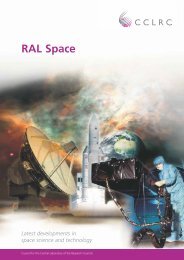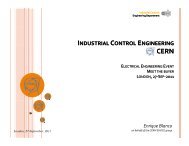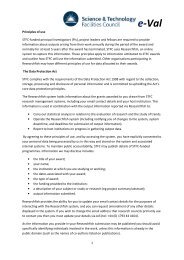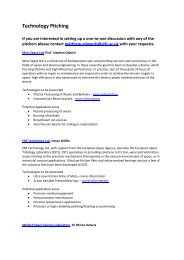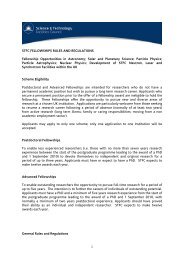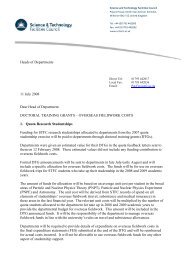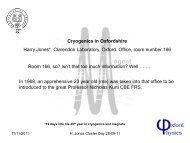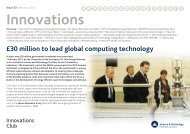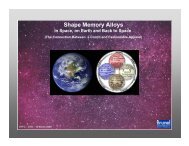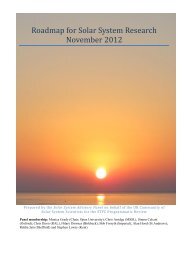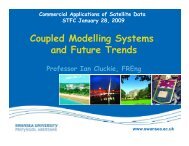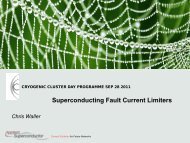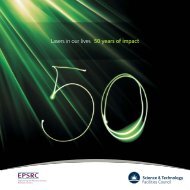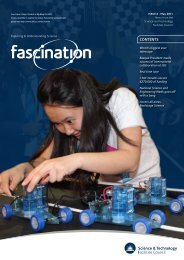Nuclear Physics Advisory Panel (NPAP) report (PDF-3.8 MB) - STFC
Nuclear Physics Advisory Panel (NPAP) report (PDF-3.8 MB) - STFC
Nuclear Physics Advisory Panel (NPAP) report (PDF-3.8 MB) - STFC
You also want an ePaper? Increase the reach of your titles
YUMPU automatically turns print PDFs into web optimized ePapers that Google loves.
Report of <strong>Nuclear</strong> <strong>Physics</strong> <strong>Advisory</strong> <strong>Panel</strong><br />
The physics of Nuclei, <strong>Nuclear</strong> Matter and Nucleosynthesis<br />
in Figure 3). This implies that ranking experimental facilities against one another<br />
does not lead to a meaningful prioritisation. However, it is clear that there is a<br />
reasonable balance of experimental effort between the three physics themes. The<br />
red lines in Figure 3 show the proposed location of the projects at facilities; the<br />
AGATA detector being used at several locations. Green lines show the connections<br />
between projects and physics themes.<br />
<strong>Nuclear</strong> theory input into the present research programme from the<br />
Manchester and Surrey theory groups mainly addresses questions of nuclear<br />
structure, the use of nuclear reactions to probe nuclear properties and on the topic of<br />
hadronic physics. The Surrey group have a strong track record of nuclear reaction<br />
theory and a particular highlight of that has been the work on extracting information<br />
on the shell-structure of nuclei from nucleon-knockout reactions. Manchester has<br />
developed the coupled-cluster approach for the calculation of the properties of light<br />
nuclear systems, which is now being extended to more complex nuclei. The group<br />
have also contributed to the emergent understanding of two and three nucleon forces<br />
from a QCD-motivated approach. The work on hadronic systems has resulted in<br />
developing an understanding of electromagnetic polarisabilities as a probe of the<br />
structure of the nucleon. Groups at Swansea and Southampton are also involved in<br />
Lattice QCD simulations.<br />
= 11 =



